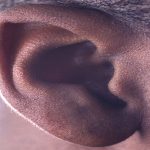
Pile those vegetables and fruits high when you sit down to eat, and your heart will thank you. A diet rich in plant-based foods translated into fewer heart problems in a new study. For the study, the researchers analyzed data collected from more than 10,000 middle-aged U.S. adults who were followed from 1987 through 2016. None had heart disease at the start of that period. The participants’ eating habits were analyzed and their eating patterns were grouped according to the proportion of plant-based foods they ate versus the proportion of animal-based foods. Compared to those who ate mostly animal-based foods, those who ate mostly plant-based foods had a: 16% lower risk of heart attack, stroke, heart failure and other heart problems; a 32% lower risk of death from heart disease; and a 25% lower risk of death from any cause during the study period. The study was published online Aug. 7 in the Journal of the American Heart Association. “While you don’t have to give up foods derived from animals completely, our study does suggest that eating a larger proportion of plant-based foods and a smaller proportion of animal-based foods may help reduce your risk of having a heart attack, stroke or other type of cardiovascular disease,” said researcher Casey Rebholz. She’s an assistant professor of epidemiology at Johns Hopkins Bloomberg School of Public Health,… read on >















